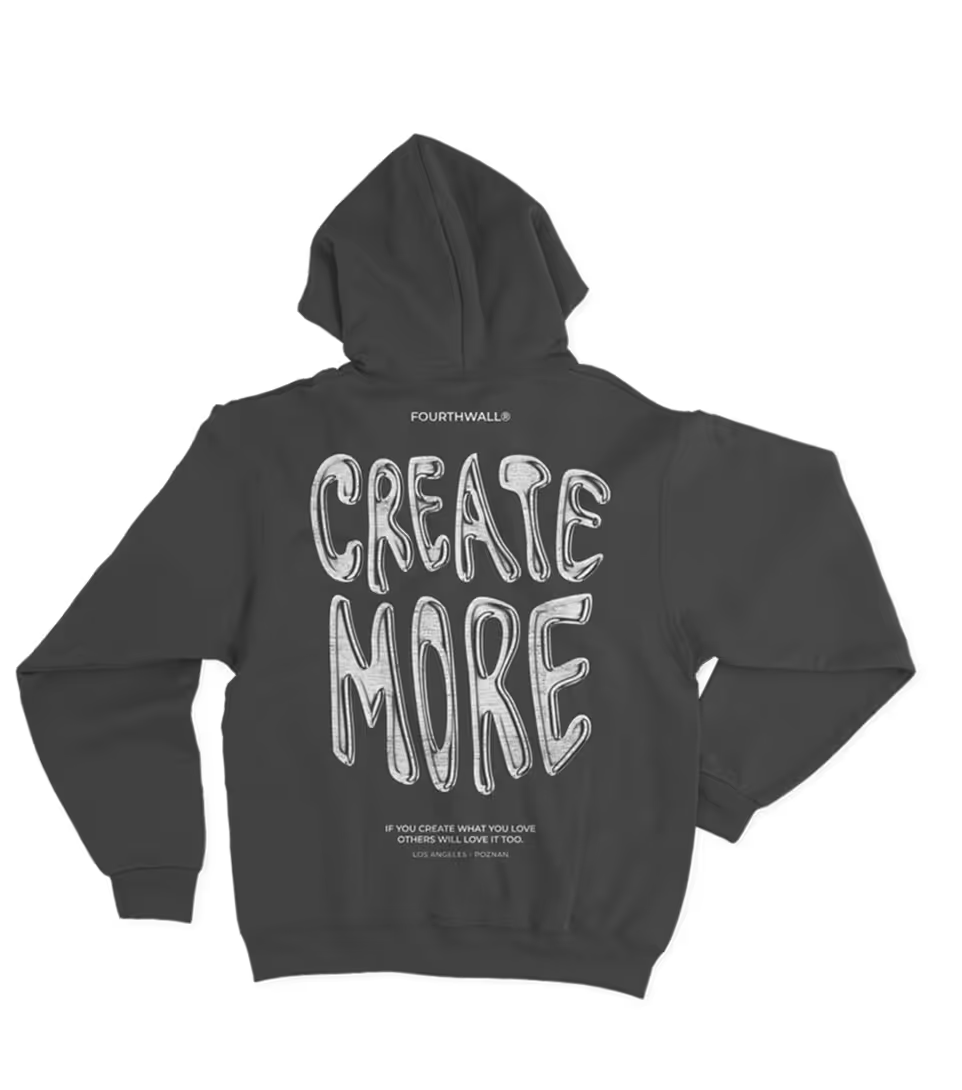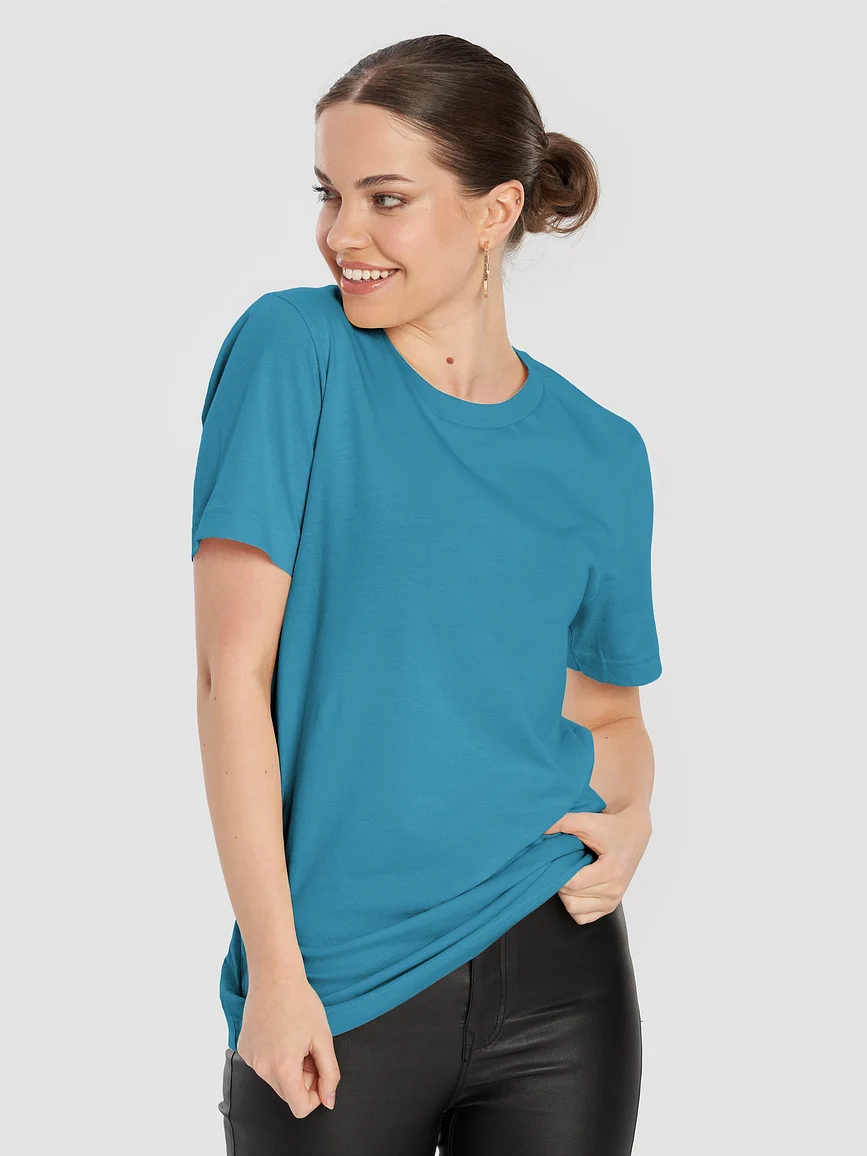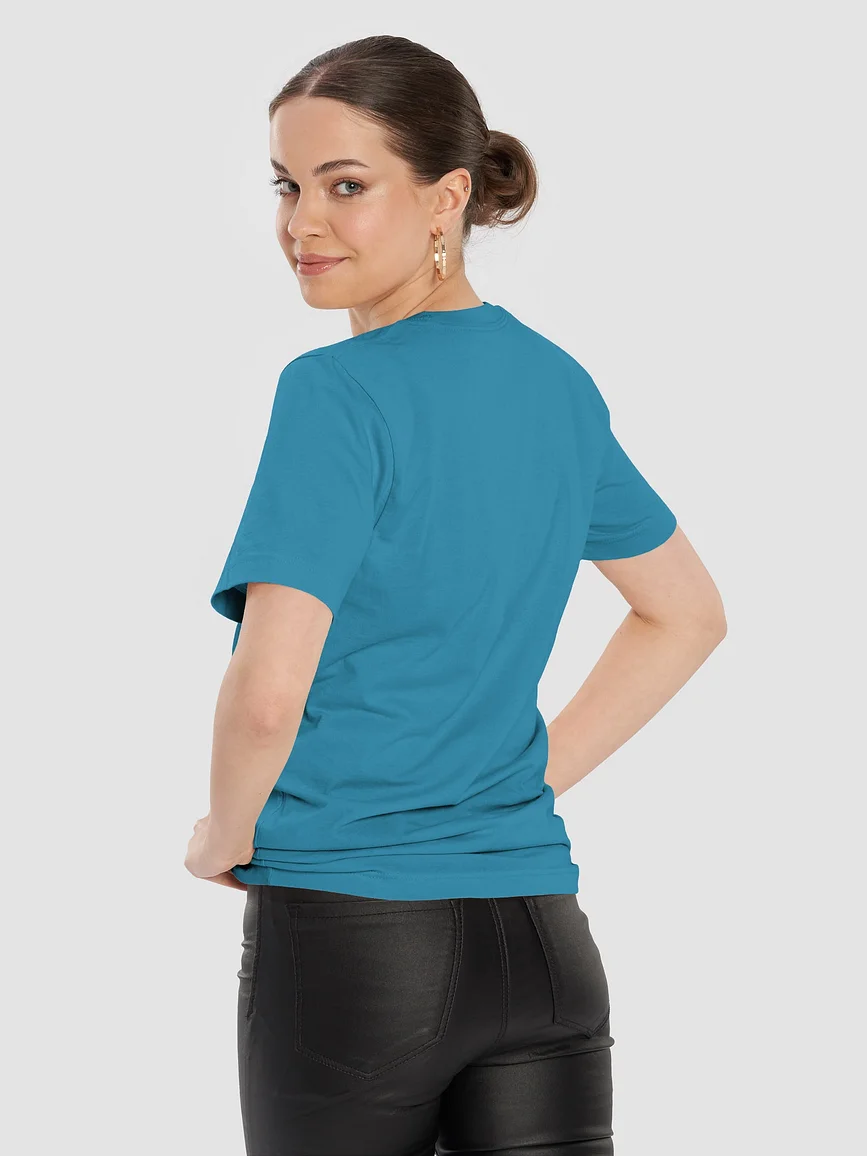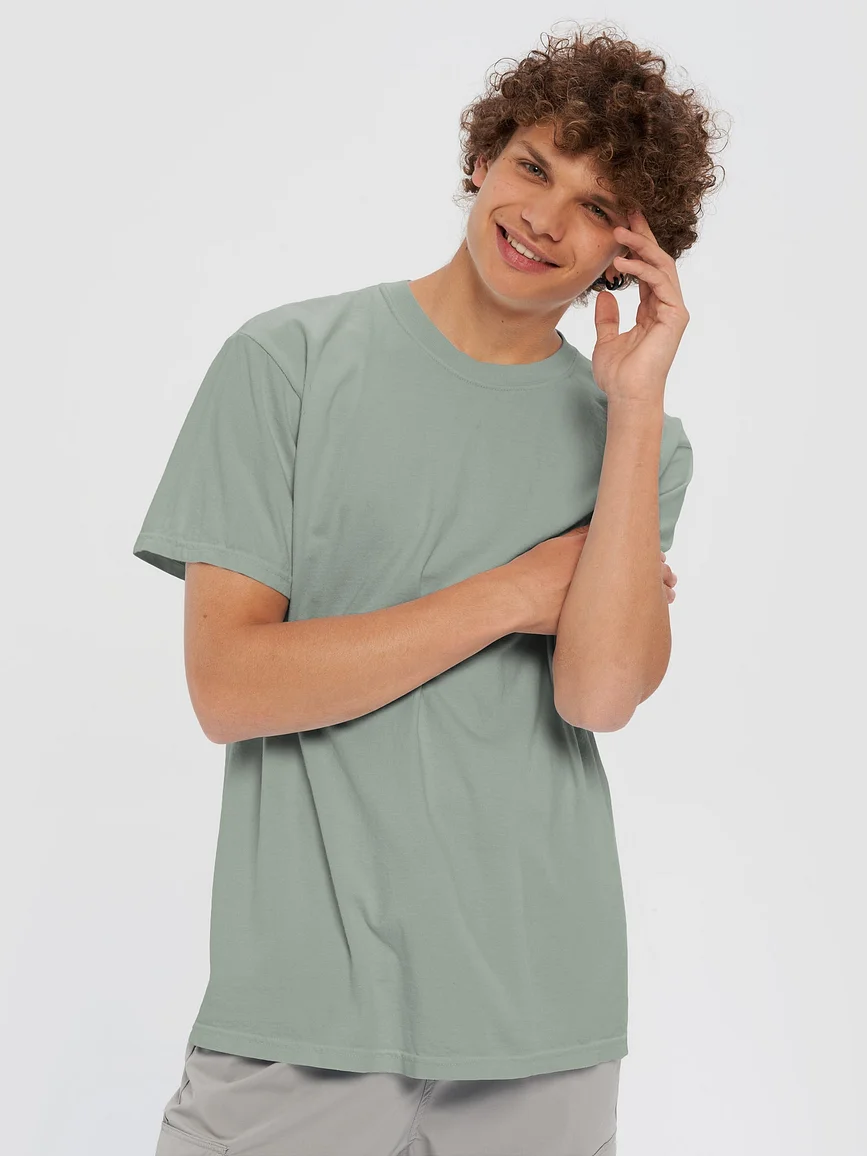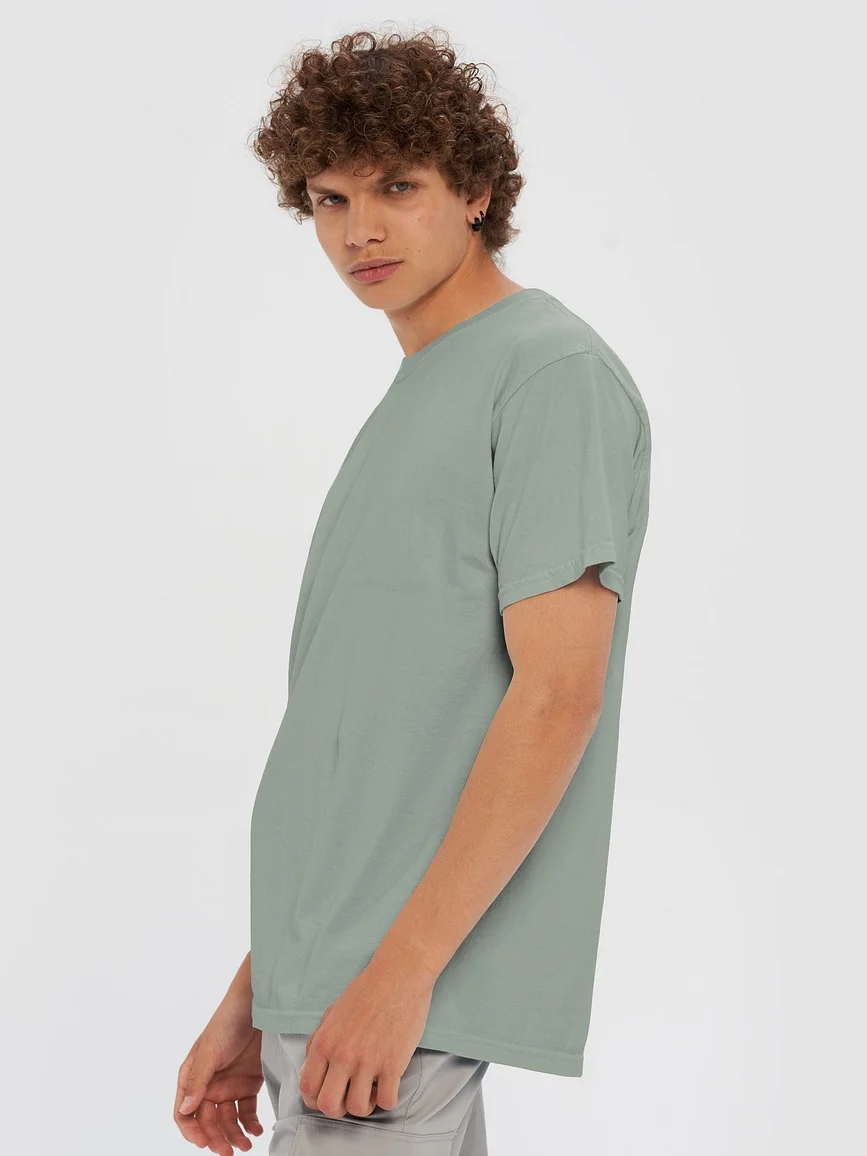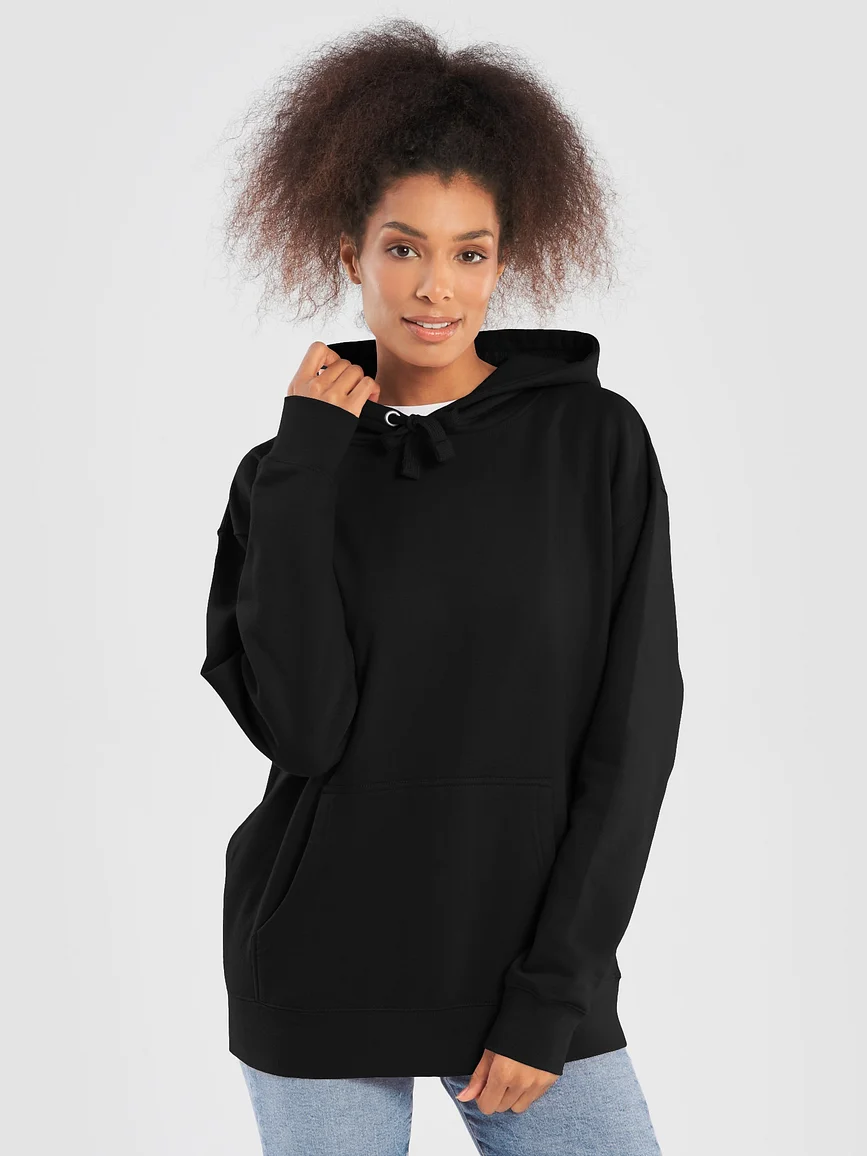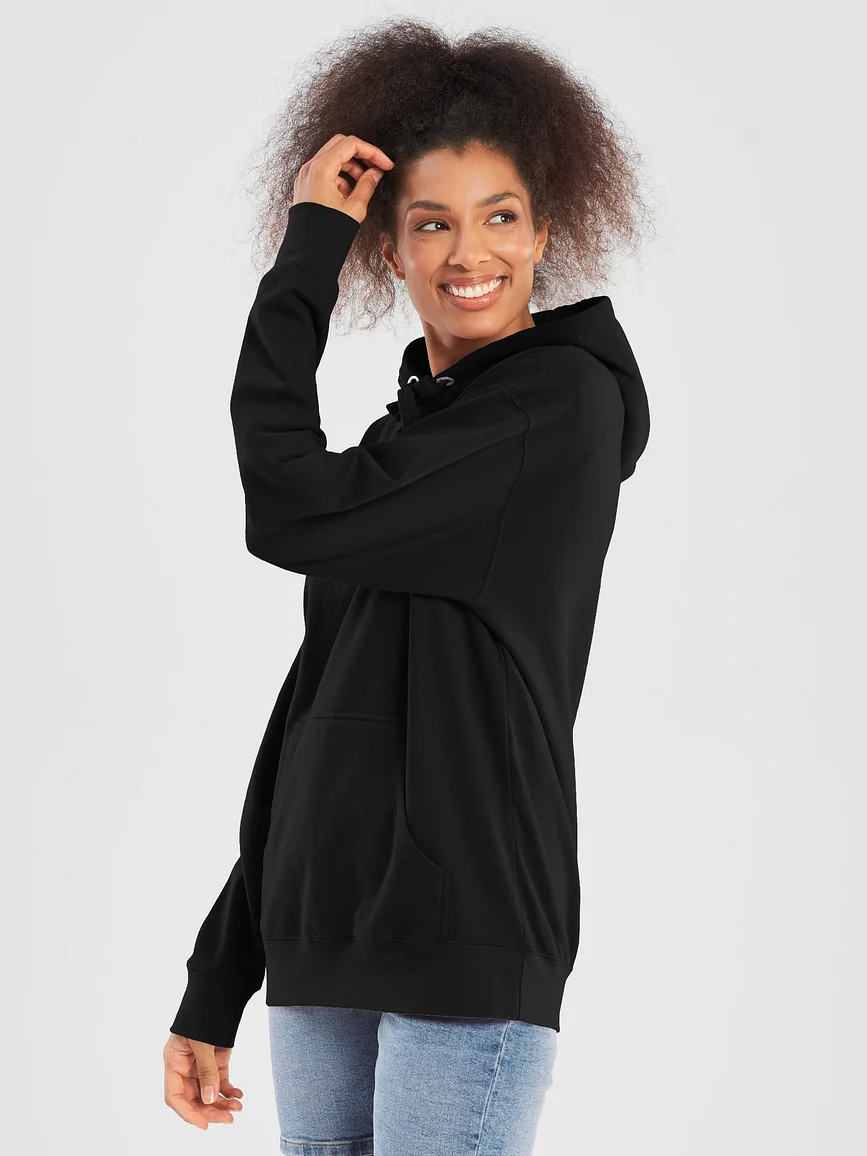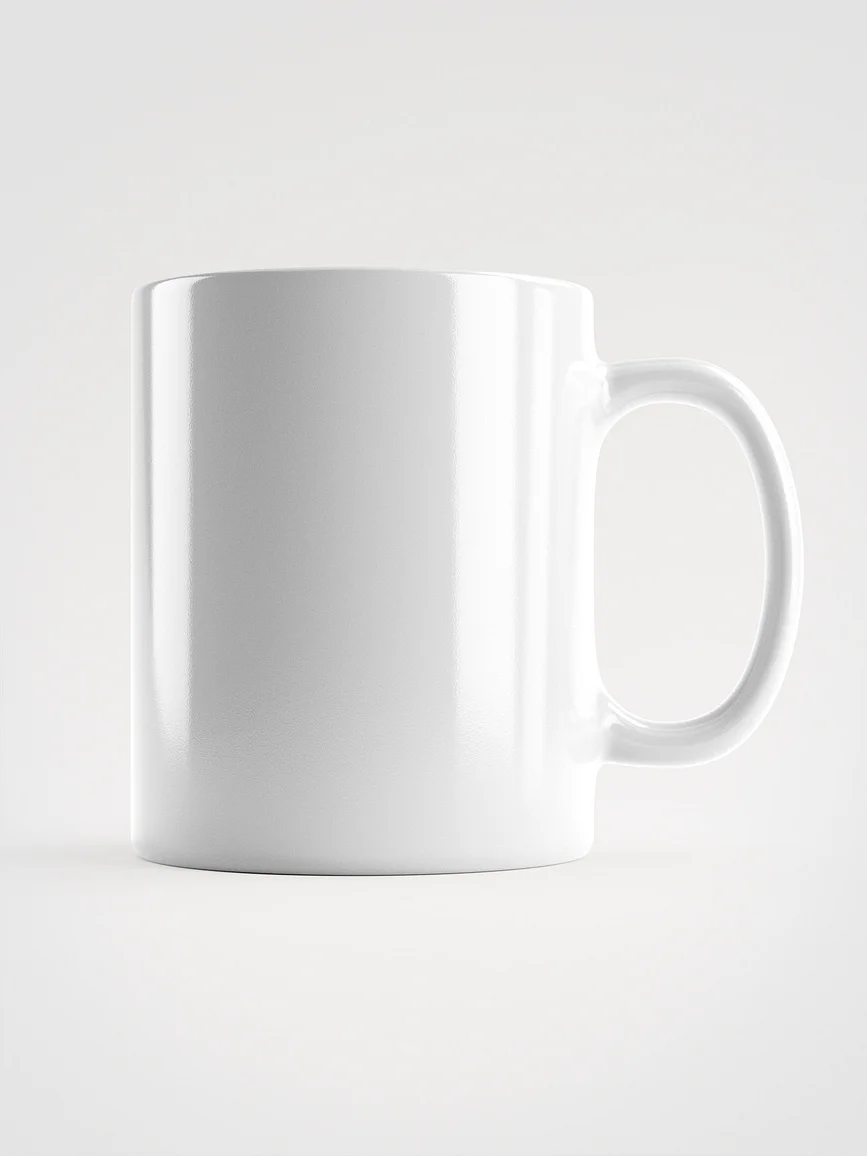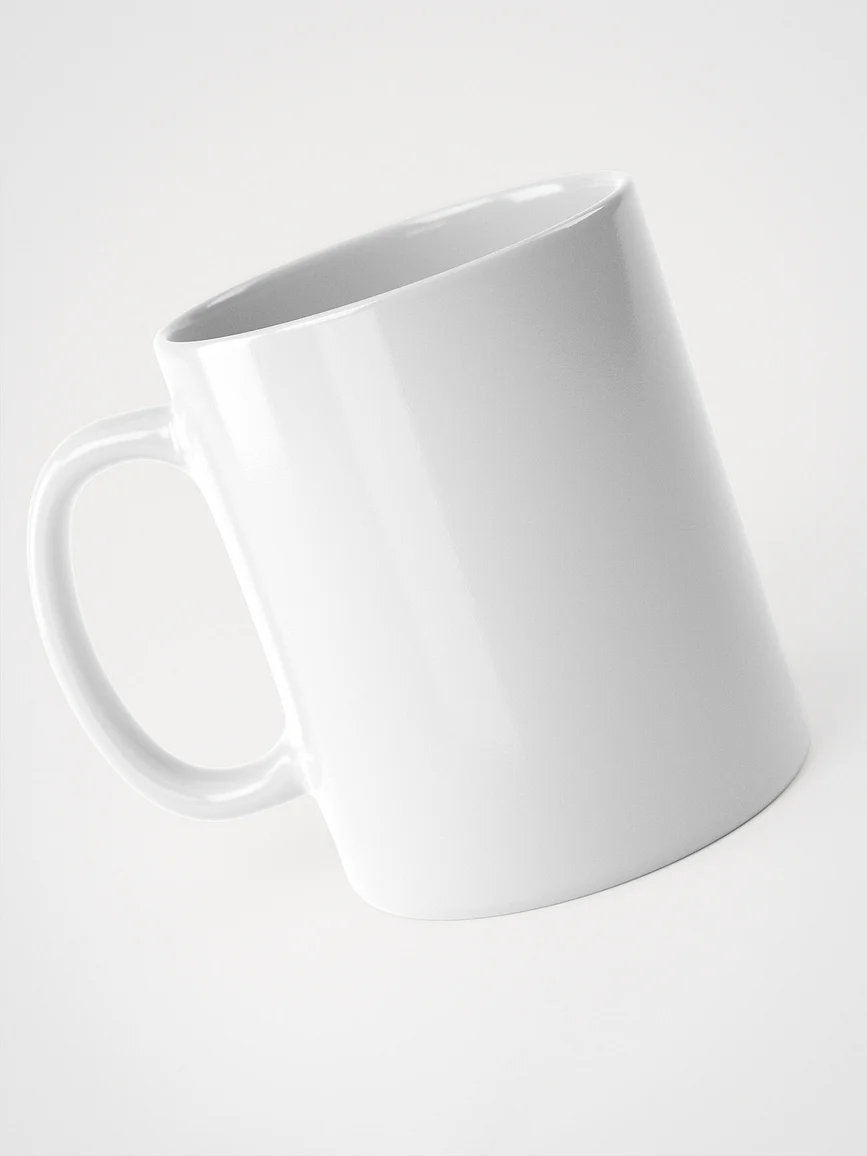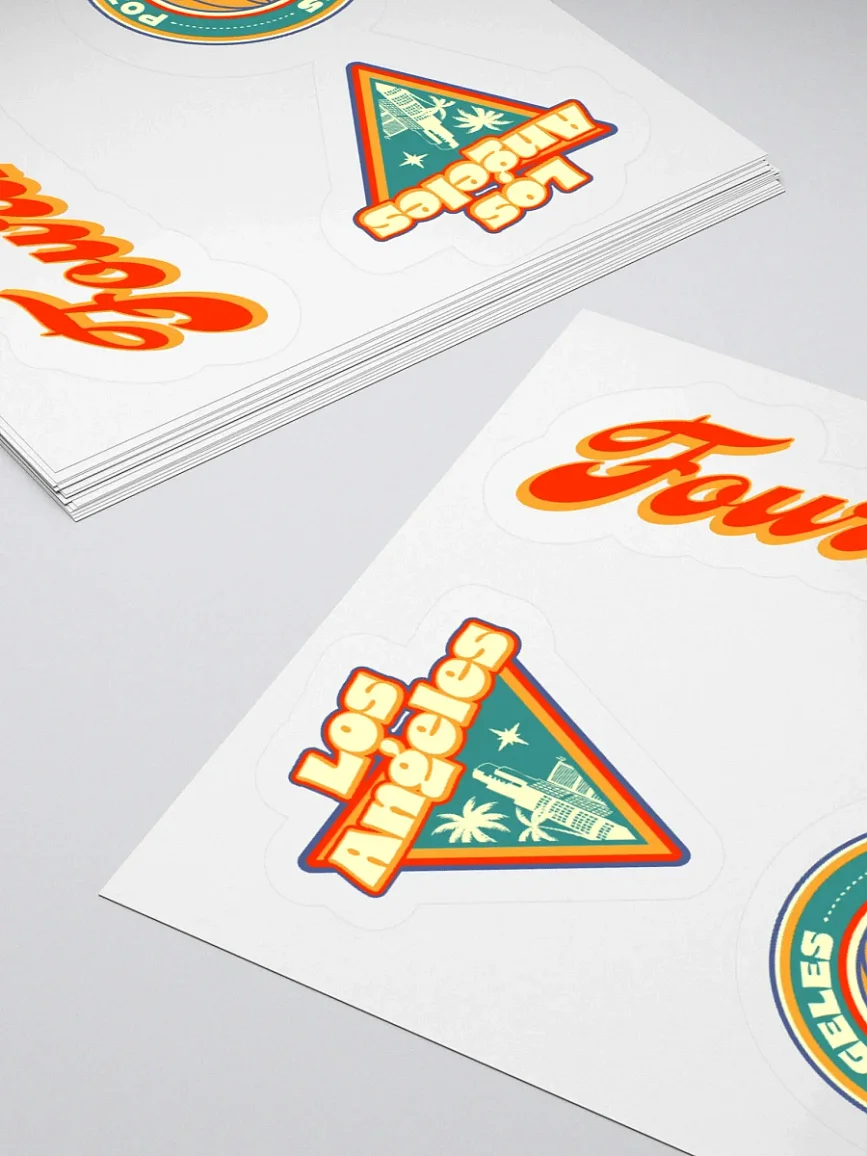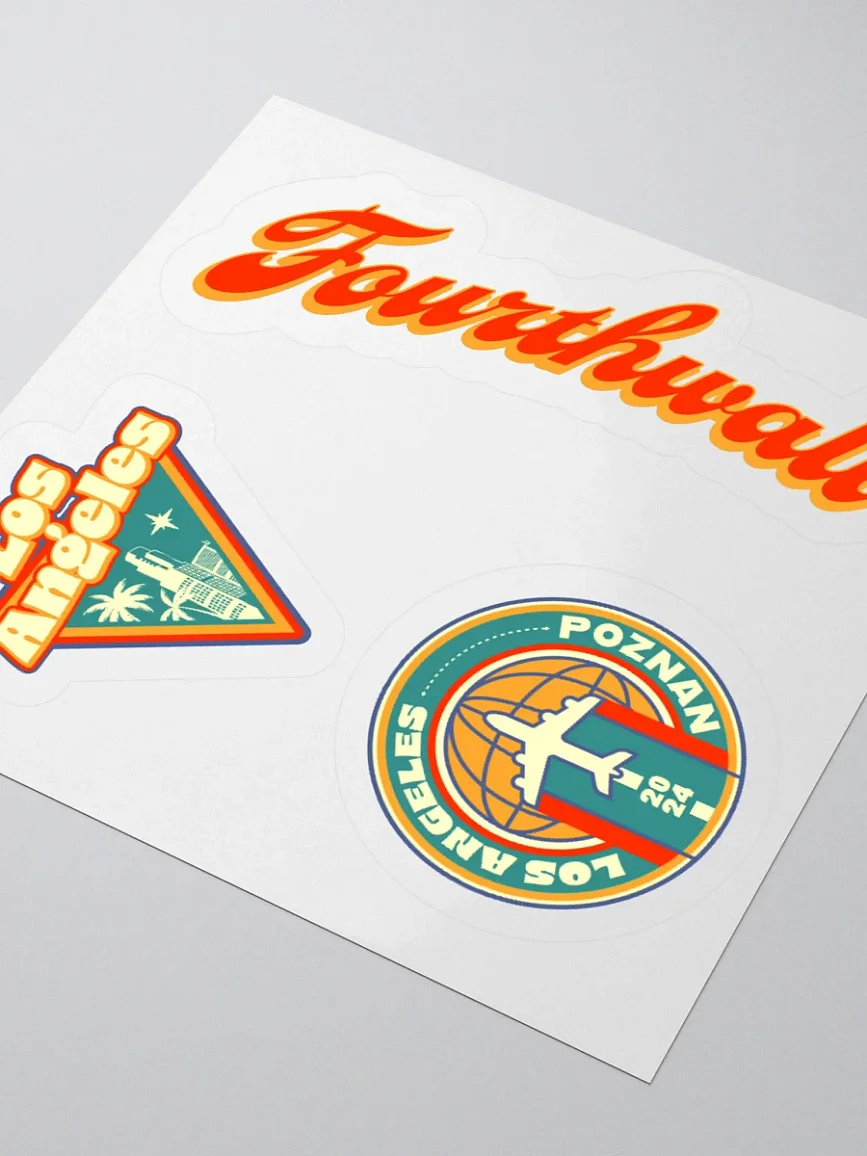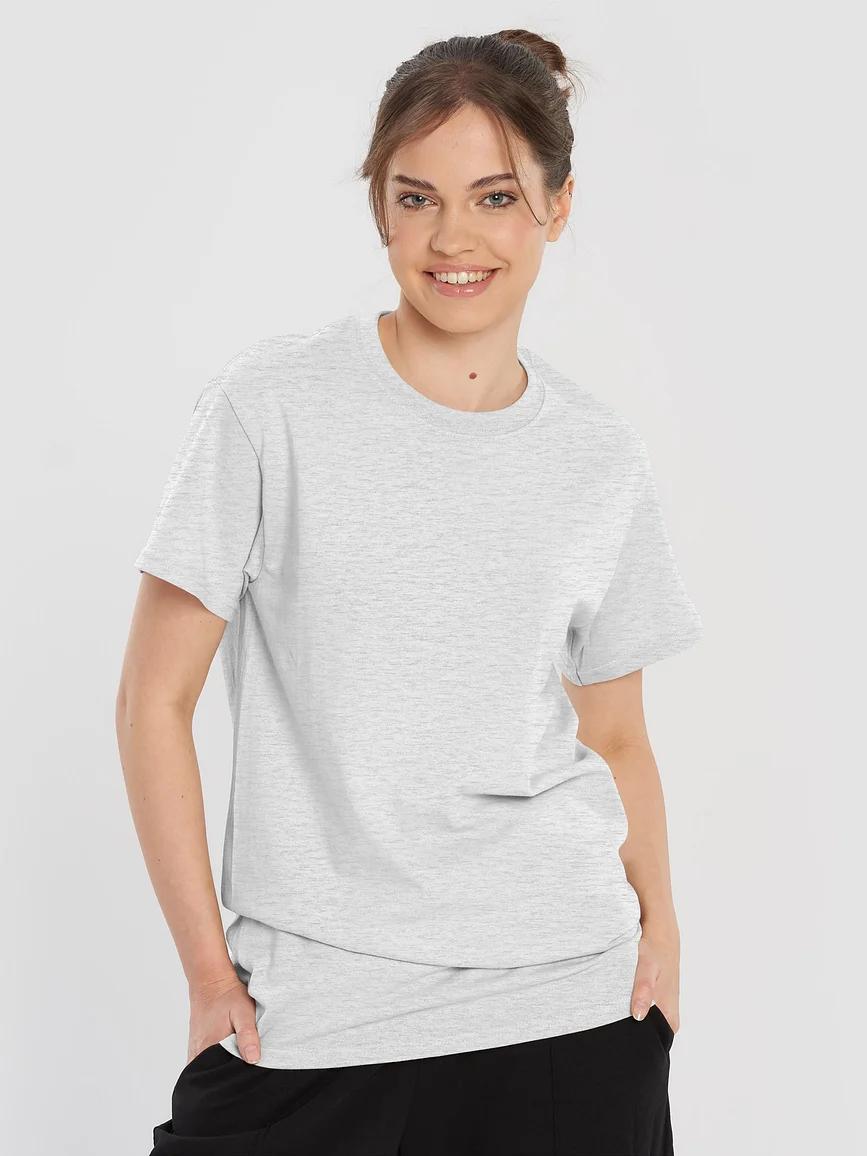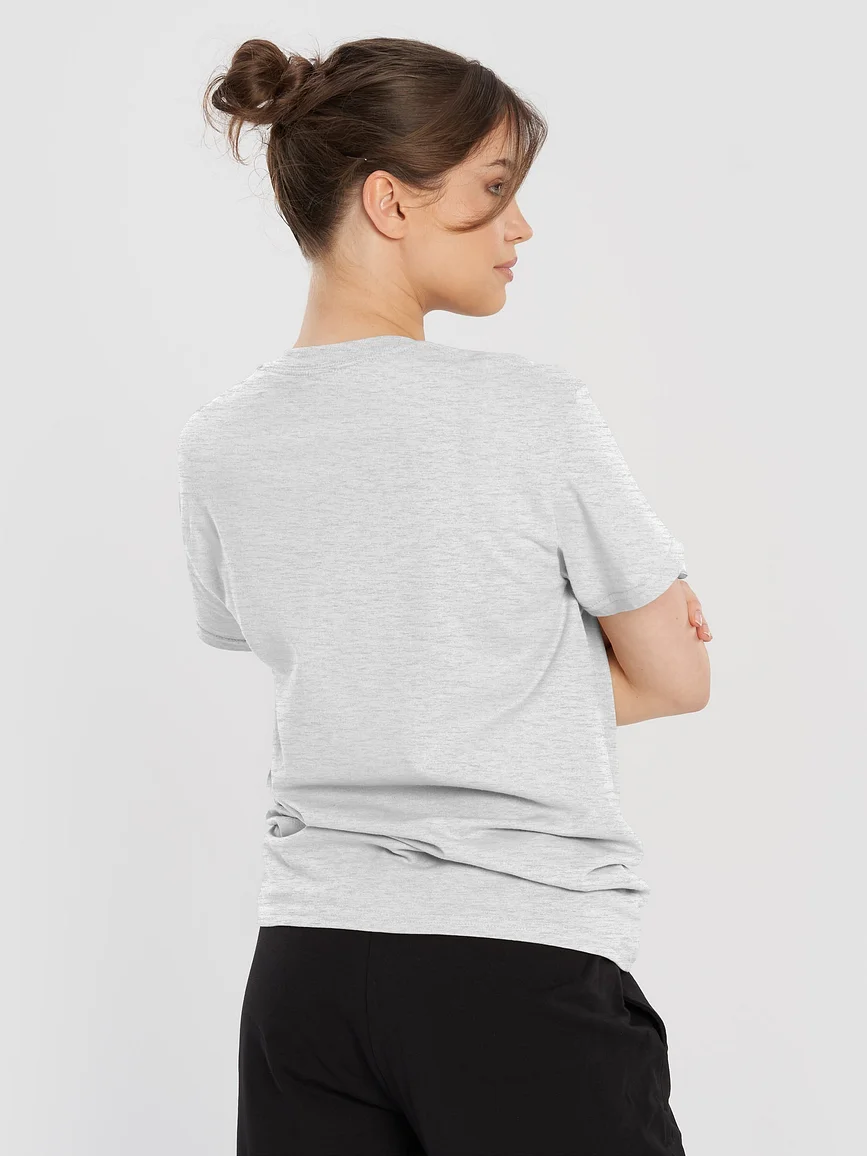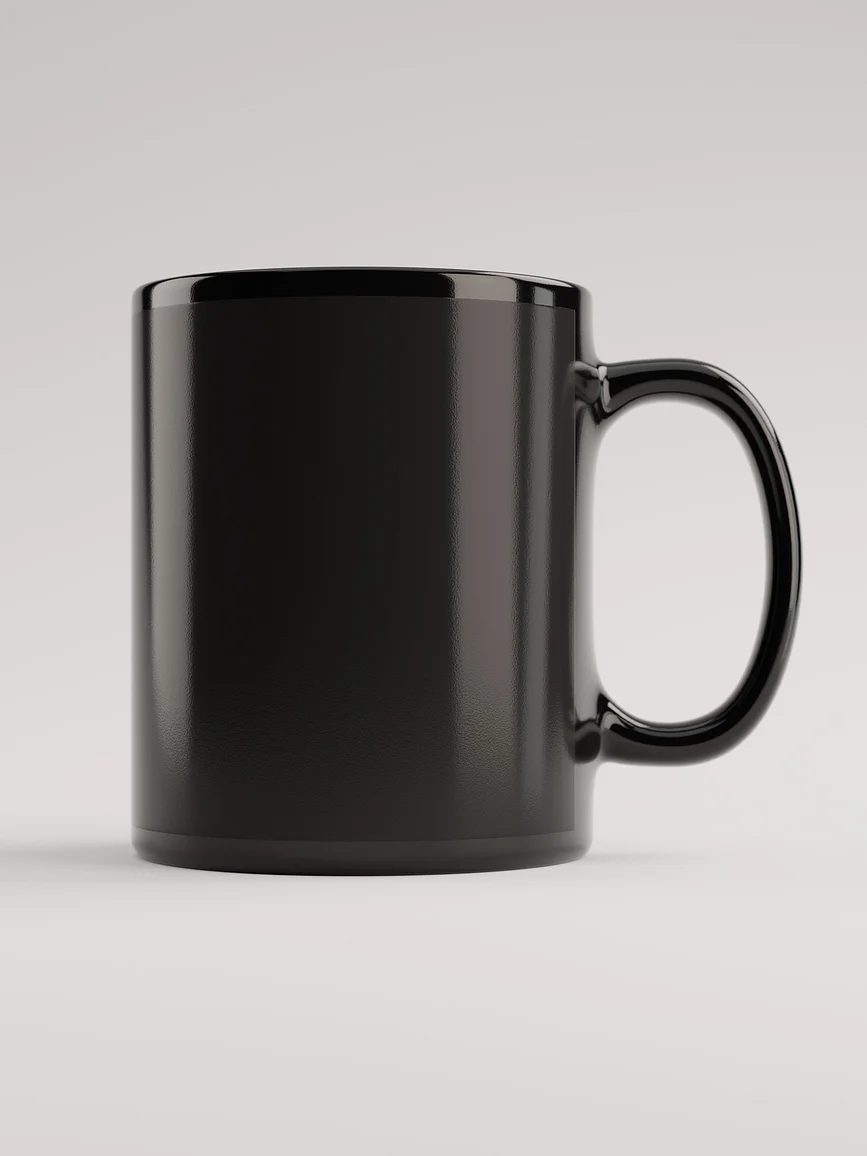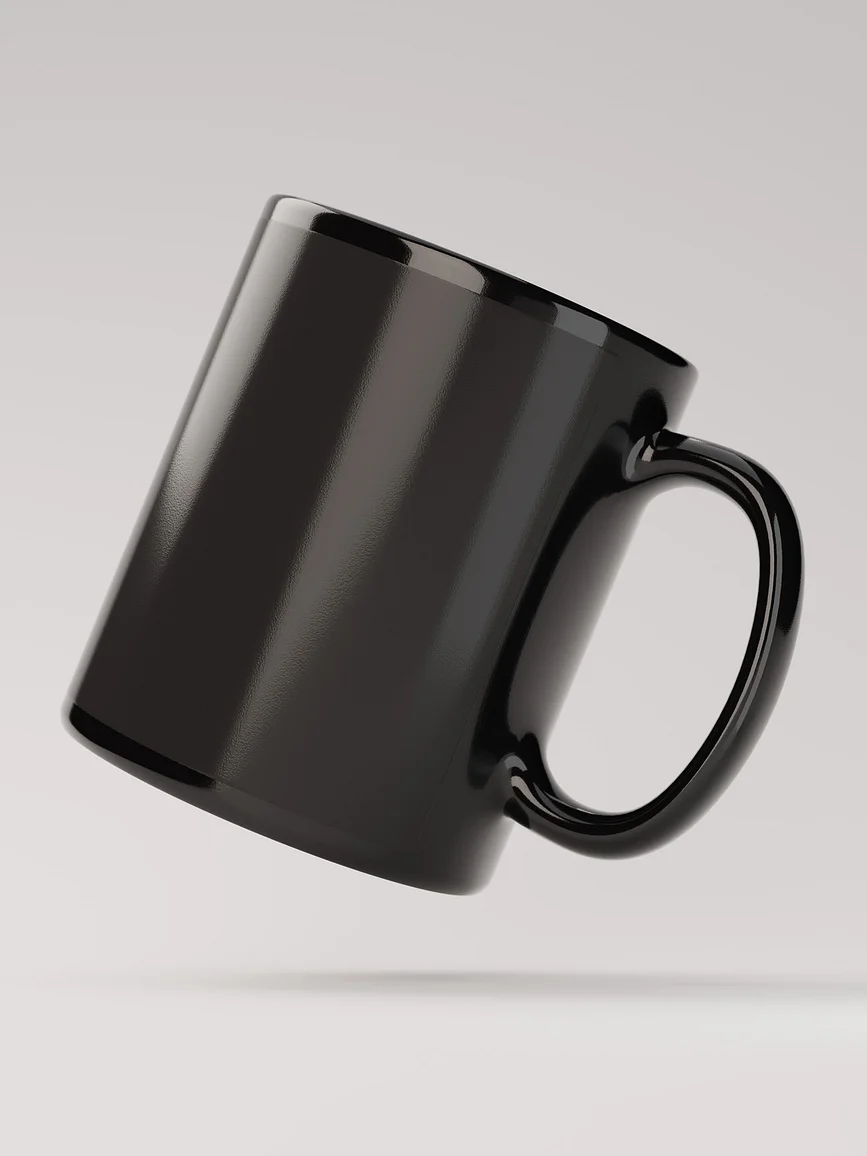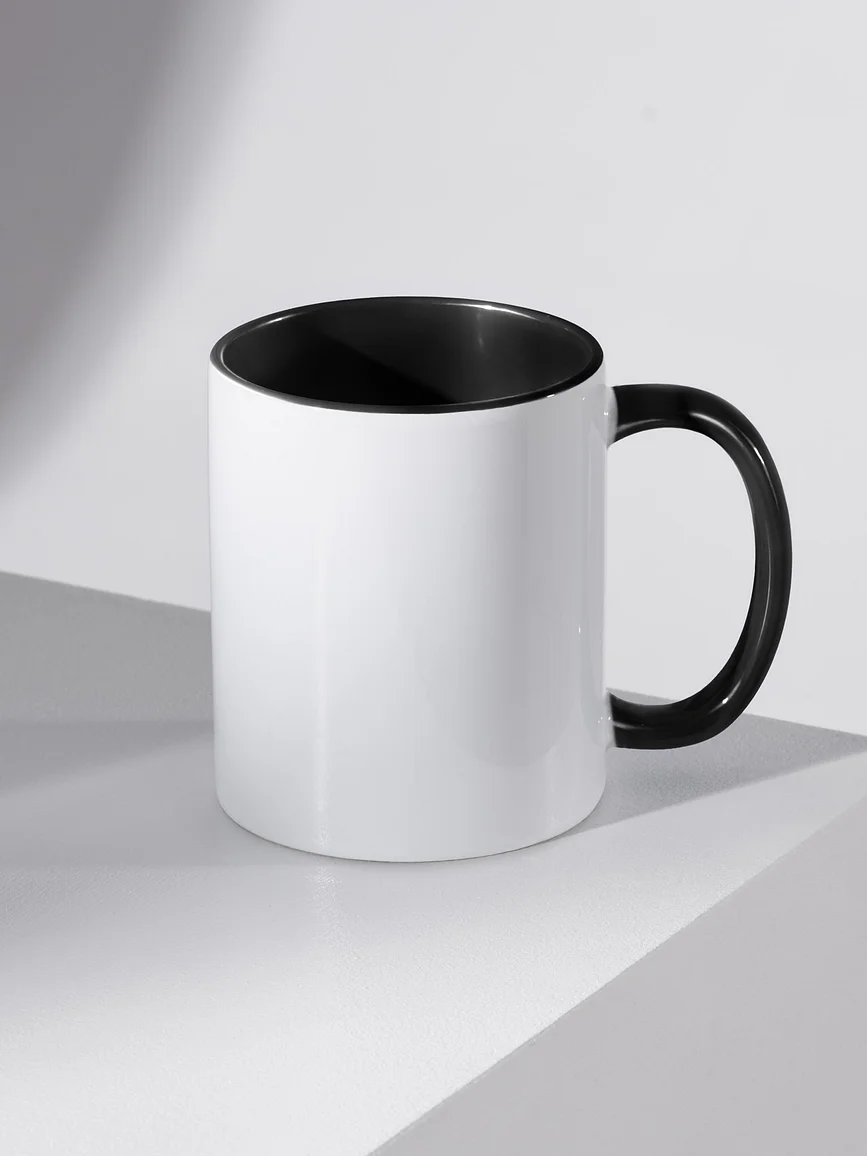Redbubble Alternatives for Print on Demand
.webp)
Redbubble has long been a popular choice for those looking for an online print on demand (POD) ecommerce platform for their merch. It's free to start, and setup is fairly easy; but it also has a much smaller product catalog than many of its competitors, only allows 30 product uploads a day (even across multiple accounts), and offers limited support, so it may not be the best choice.
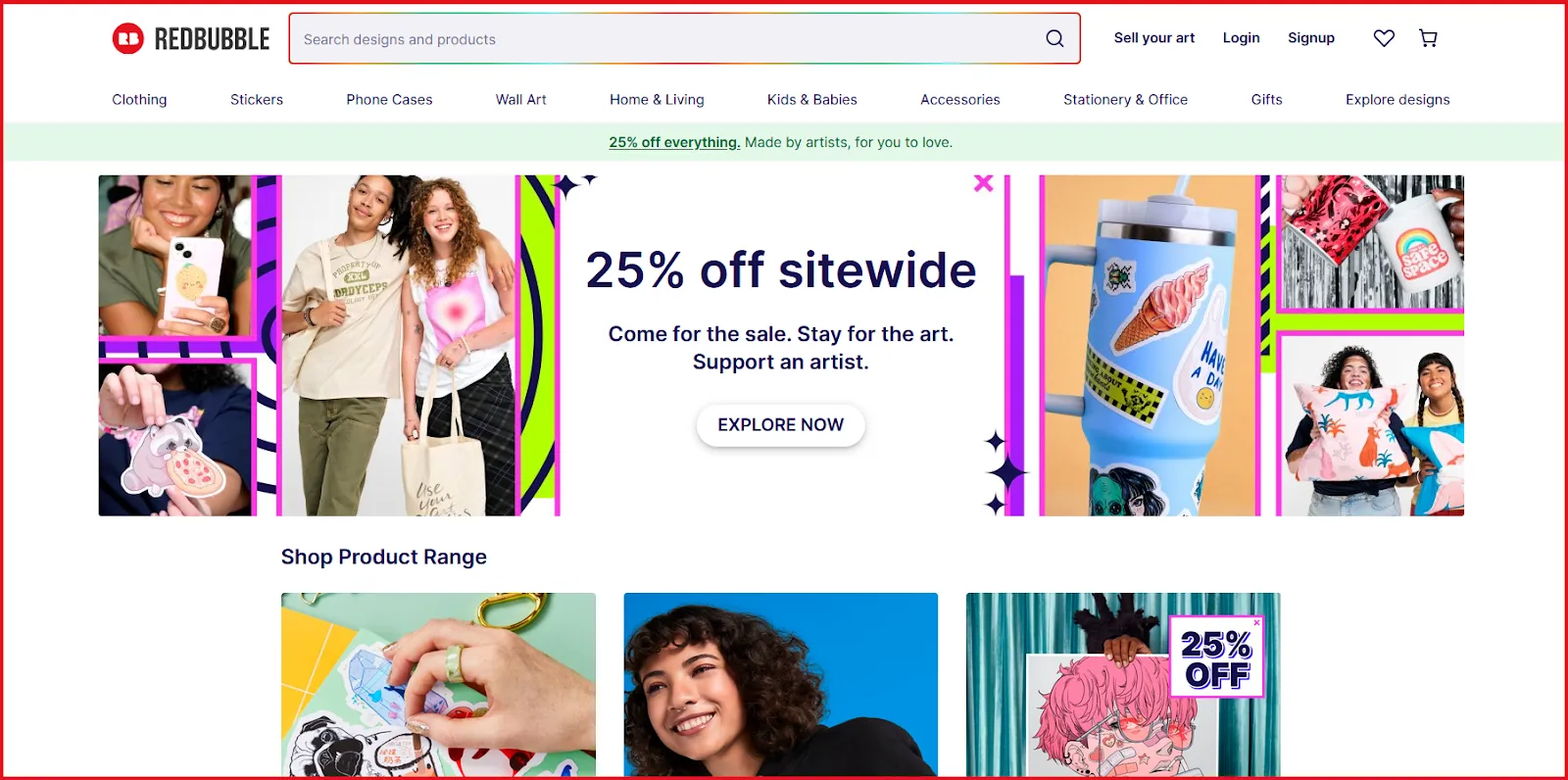
There are a variety of other print on demand ecommerce Redbubble alternatives that cater to different preferences, features, and budgets, from Fourthwall and Design By Humans to Threadless, Sellfy, and Printify, to name a few. It's smart to research what they all have to offer before simply defaulting to Redbubble. Exploring these options can help you find the best fit for your needs, get people excited about your ecommerce store, and maximize your earnings!
5 Steps to Finding Your Best Redbubble Alternative
1. Define Your Business Needs
Before jumping into the vast array of platforms available, it’s essential to clearly define your business needs. Consider what types of products you want to sell, your target audience, and your primary goals. Are you looking for a site that offers extensive customization options, or do you prioritize ease of use? Do you want integration with your current socials, or is having video clips alongside your shop more important? Choosing a site like Fourthwall often means you don't have to choose - Fourthwall can accommodate many of your ecommerce needs at once, as they can provide you with a fully featured shop and website, socials integrations, video posts, memberships, and much more!
2. Research Different Platforms
Once you’ve identified your business needs, start researching different platforms, from Redbubble to Teespring to Fourthwall. Look for sites that have a good reputation and positive reviews from other creators, paying attention to the platform’s features, user interface, visual look and feel, and overall usability. You might also join online communities or forums like Reddit where creators discuss their experiences with various ecommerce platforms to get real-world insights.
3. Evaluate the Product Range and Quality
It's important to evaluate the range and quality of print on demand products offered by an ecommerce platform. Check if the platform provides the types of product categories you want to sell, whether it’s apparel, accessories, home decor, or other items; and make sure there's a good variety of selections to customize, not just three T-shirts, for instance. Look for information on the quality of the materials used and the printing techniques employed; high-quality products are more likely to lead to happy customers and repeat business.
4. Explore Pricing and Profit Margins
Understanding the pricing structure and potential profit margins is essential for your business’s financial health. Compare the base prices of products, costs associated with customization, and any other fees or commission rates for the ecommerce site you're considering to make sure you're the one coming out ahead! A good print on demand ecommerce platform should allow you to set competitive prices while maintaining healthy profit margins.
5. Check the Customer Service and Support
Reliable customer service and support can make a significant difference in your experience - and your customer's experience! - with a print on demand platform. Look for platforms that offer robust support options, including live chat, email, and phone support. Check if they provide comprehensive resources like FAQs, tutorials, and user guides. Good customer service can help resolve issues quickly and keep your business running smoothly on both sides.
10 Great Redbubble Alternatives
1. Fourthwall
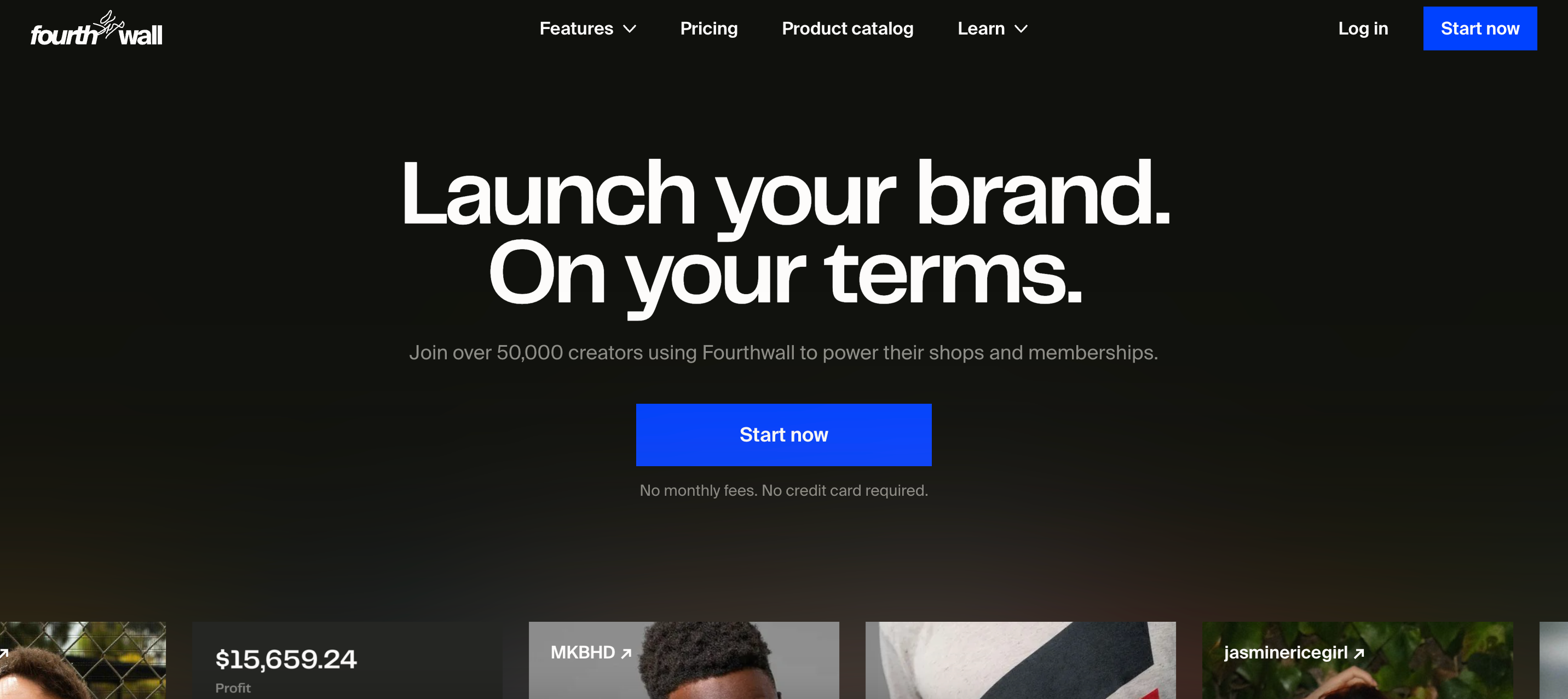
Fourthwall is designed for content creators, influencers, and small businesses, enabling you to customize and sell merch directly to your fans/audience. With its user-friendly interface and a wide range of POD product categories including apparel, art prints, phone cases, home goods, and even more unusual custom products like plushies, candles, and comic books, Fourthwall makes it easy for creators to monetize their unique designs, and you can get started for free. In addition to print on demand goods, you can also sell digital products and memberships on your Fourthwall site, and integrate your merch with YouTube and TikTok Shop.
Pros:
- User-friendly design interface for your print on demand products, plus a great website builder for your custom site and store.
- Strong customer support plus a library of helpful blogs full of creator stories, how-tos, and creative shop tips.
- An extensive catalog of high quality, customizable products, including some unique items.
Cons:
- Still developing features for overseas (non U.S.) customers.
- Discoverability is up to you for the most part, so Fourthwall is best if you're bringing in your own audience/customer base.
2. Printful
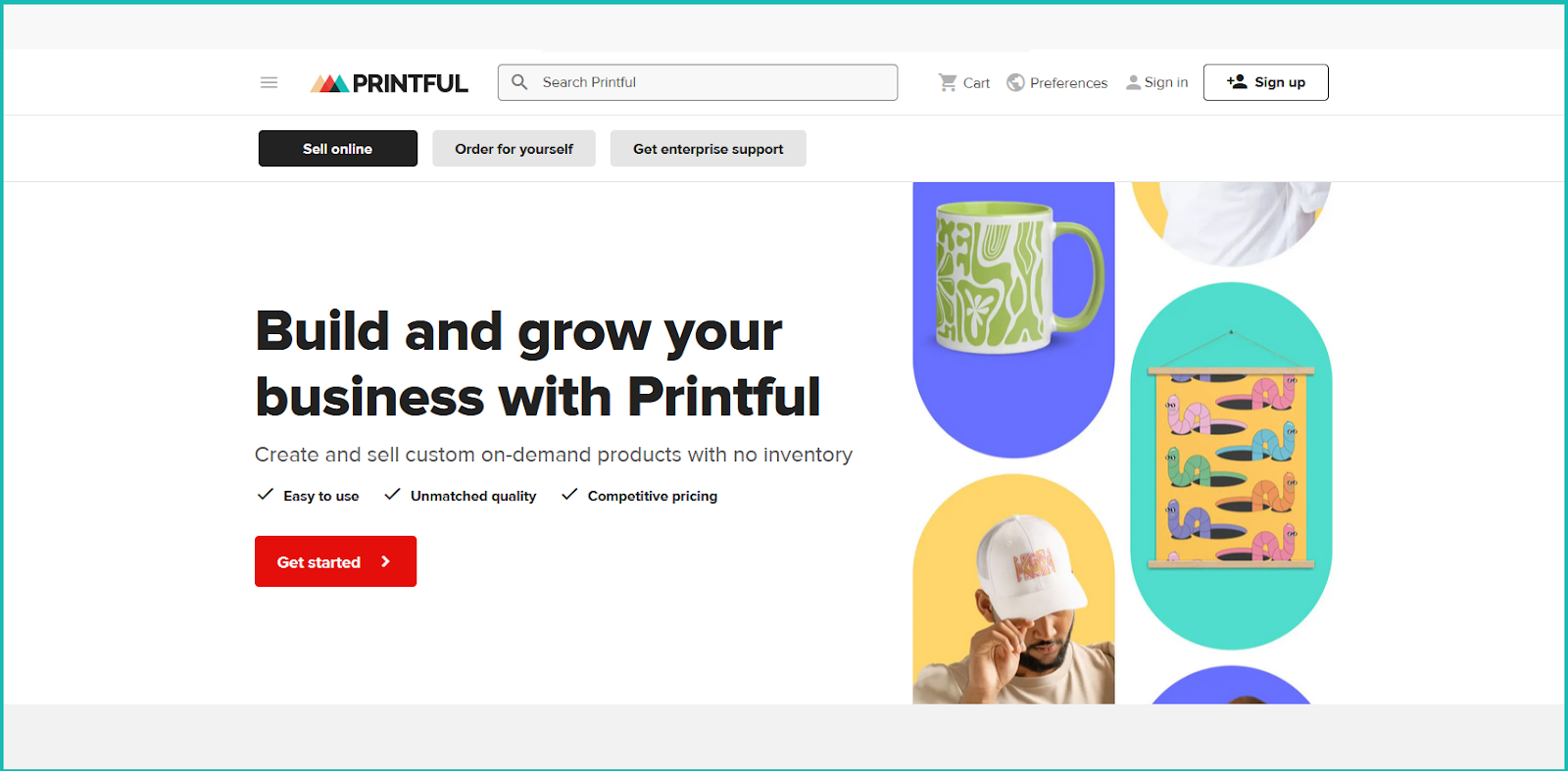
Printful is a print on demand and fulfillment platform that integrates seamlessly with major ecommerce platforms like Shopify and WooCommerce. Printful creators can start for free, choosing from Printful's product catalog that includes embroidery and white-label packaging options; unlimited product designs are included on all plans, and the Printful site is easy to use.
Pros:
- Printful sites are easy to set up and use.
- High quality print on demand results, and good product quality.
- Offers their own built-in mockup generator and beginner-level logo maker, nice features for those new to ecommerce.
Cons:
- Printful has higher base prices and less POD products to choose from compared to some competitors.
- No phone support available from Printful customer service.
3. Teespring (now Spring)
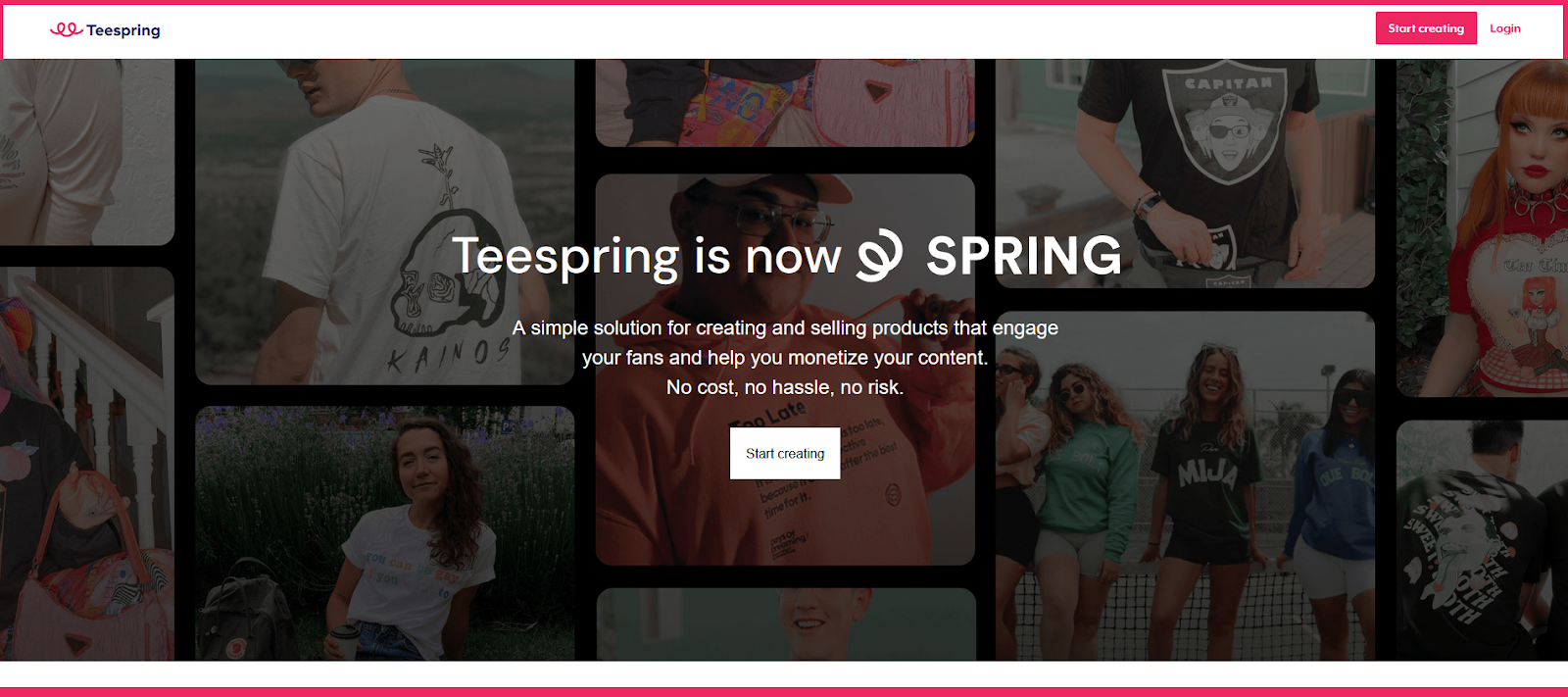
Teespring lets you sell customized print on demand apparel and accessories with no upfront costs (fees are subtracted per product sold), and up to 50 products in your starter store. Teespring has limited but easy to use customization options, and a smaller selection of payment gateways than some of its competitors. But its integrated marketing tools and support for fundraising campaigns do make Teespring a popular choice for creators looking to sell merch for charity events.
Pros:
- Easy-to-use design tools and good basic site functionality.
- Teespring offers strong support for fundraising/charity merch campaigns.
Cons:
- Teespring has limited POD customization options for product variants.
- Not as many payment gateway options as competitors.
- Limited access to your Teespring customer database information, which could make email lists or other promotions challenging.
4. Etsy
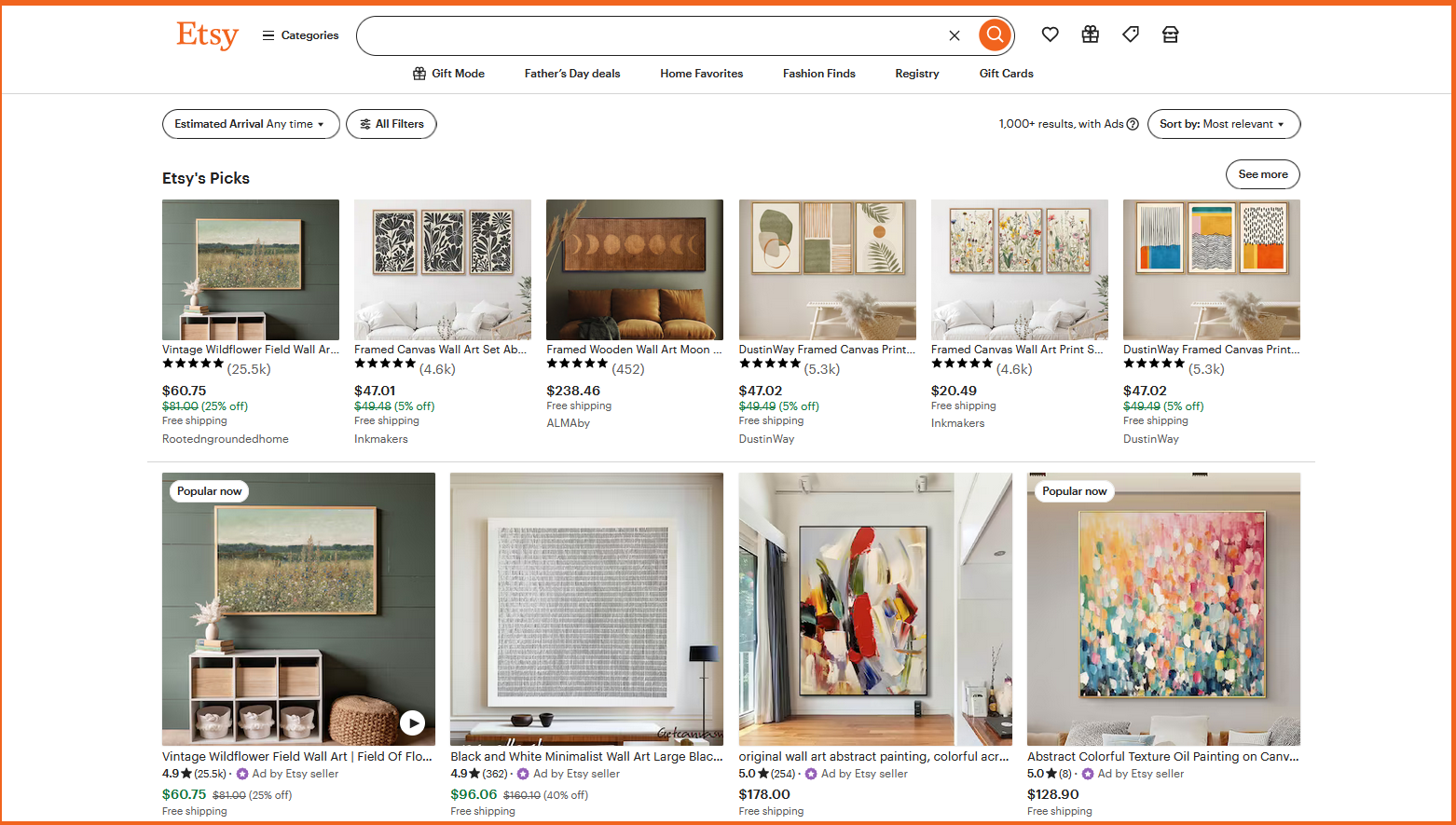
Etsy offers strong brand recognition with its mix of print on demand, handmade goods, vintage finds, and printable downloads; everything from T-shirt designs to custom phone cases, handcrafted items, and art prints. It's a massive site and it can be easy to get lost in the shuffle, but you can improve your odds with research and smart use of keywords. There are multiple print on demand options, but watch those numbers; your profitability depends on your designs, the quality of your merch, and how much you work to get the word out on your Etsy site.
Pros:
- Extremely wide range of product categories, so there's a niche for just about every style.
- Site and listing form are both easy to use.
- Strong brand recognition; most people who shop online have heard of Etsy.
Cons:
- High commission rates and fees.
- Also high competition and saturated market.
- Discoverability is low unless you pay for Etsy ads; you'll need to spend a lot of time independently promoting your Etsy site.
5. Printify
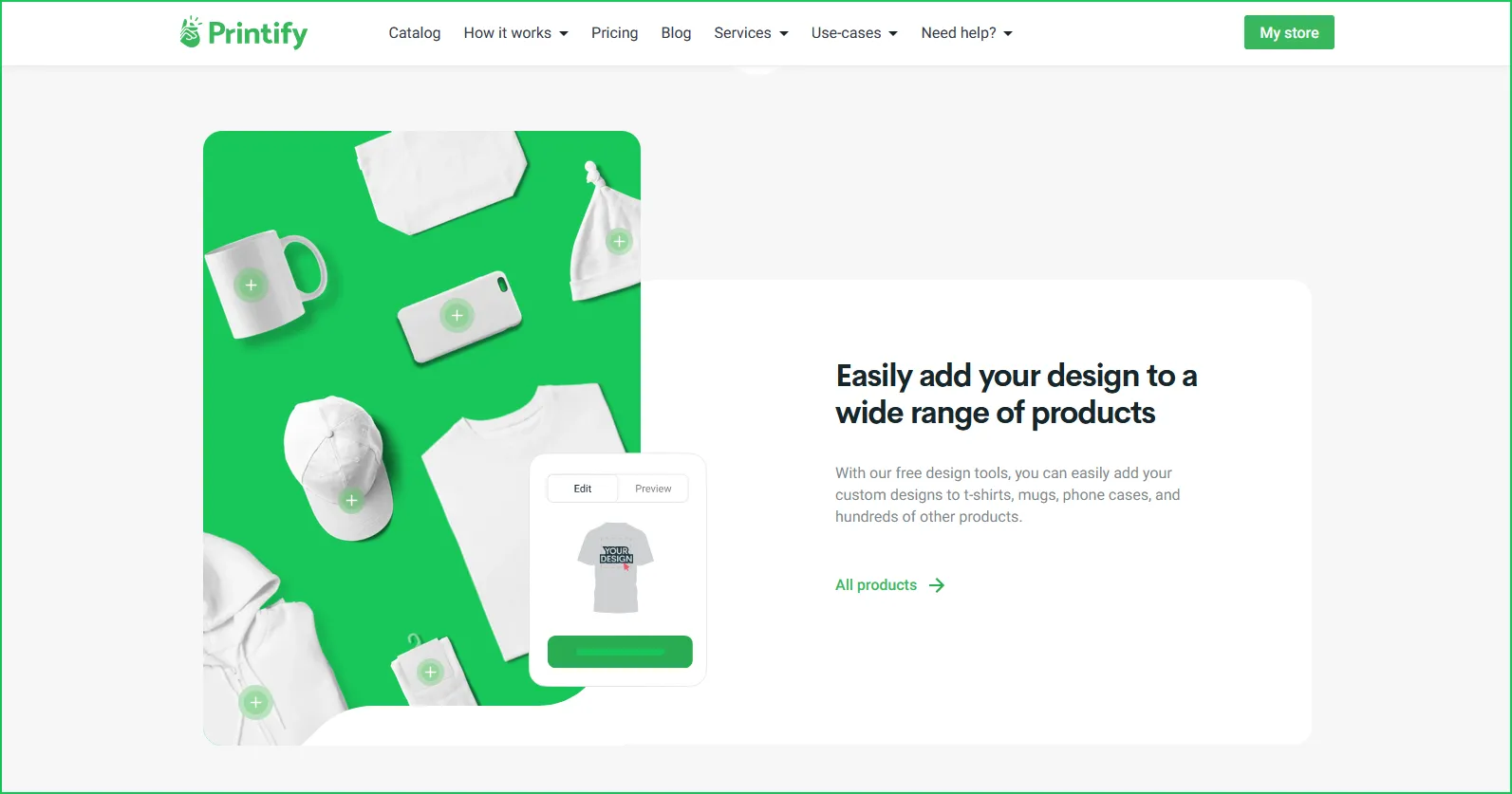
Printify is another ecommerce site offering over 900 products and competitive pricing. Printify's integrations with online marketplaces like Shopify, Amazon, TikTok Shop, and the aforementioned Etsy mean it has the potential to grow large customer bases. Printify is free and easy to use; it also allows unlimited POD product designs, so you can easily get started. Shipping, however, isn't the fastest, and Printify product quality can vary depending on which print on demand provider you choose, so do your research.
Pros:
- Printify offers good integration with other online marketplaces.
- Get started for free; the Printify site is also easy to use, even for beginners.
- Large selection of products and print providers
Cons:
- Variable product quality depending on the print provider.
- Printify shipping times can be slow.
6. Design By Humans

The community-driven marketplace Design By Humans offers custom apparel and accessories, up to 500 designs/products per shop, although it has a very limited amount of base products to choose from for customization, basically just shirts, art prints, phone cases, mugs and stickers. Design By Humans does champion its engaging community, apparel brands, and support for collaborations; Design By Humans is especially popular among independent visual artists and content creators.
Pros:
- Encourages community engagement via "Fanshops" and art contests, and sometimes features creators on their Design By Humans socials.
- Supports collaborations and their own Design By Humans art contests.
Cons:
- Fixed royalties and quite low profit margins.
- Reviews of Design By Human's POD apparel products aren't always the best, so proceed with caution when choose which products to customize.
7. Threadless
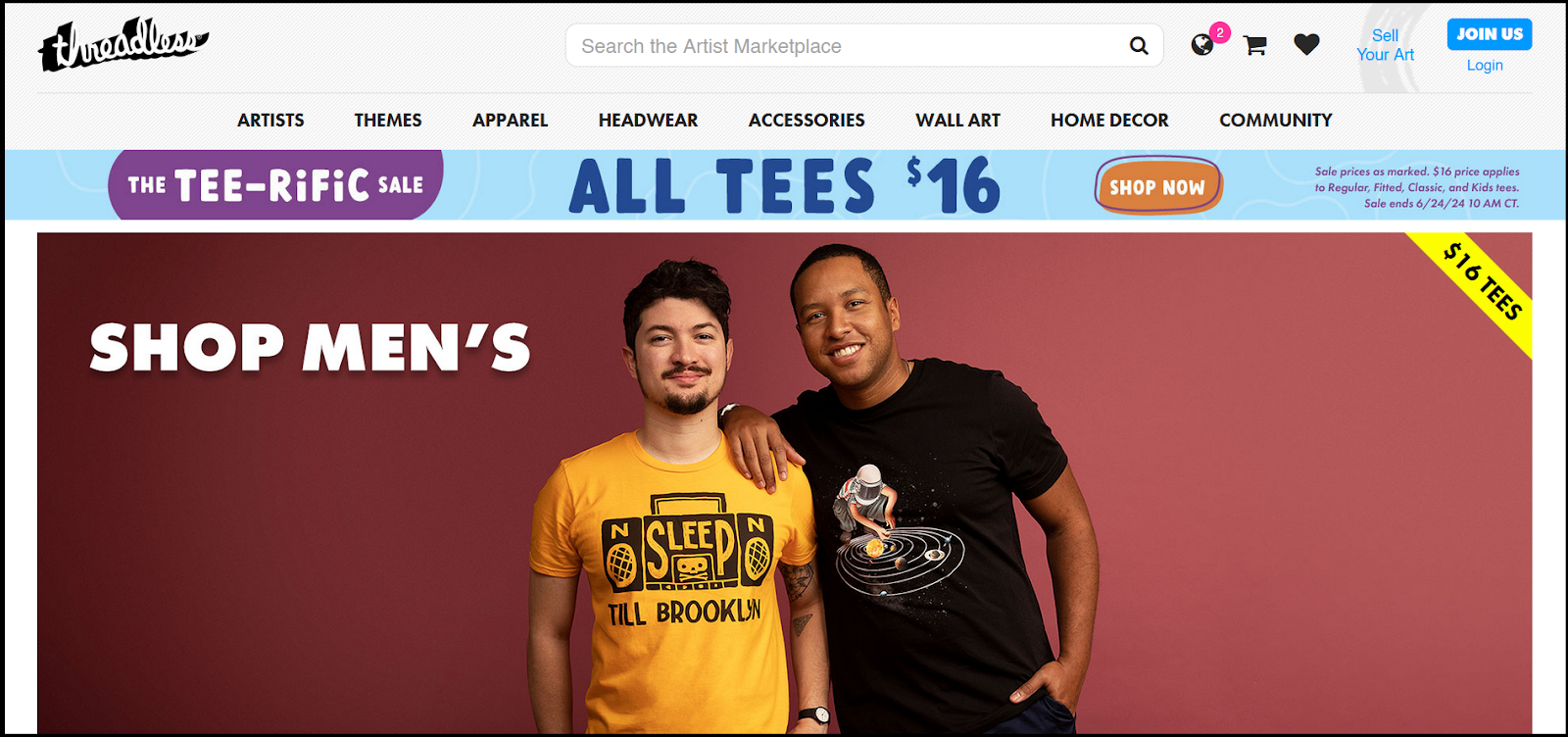
Threadless offers a more edgy approach to print on demand ecommerce, with frequent design challenges, lots of quirky novelty designs, and a wide range of high-quality custom products from T-shirts to art prints. Its artist community and Threadless design contests make it a fun option for creators; products are also easy to customize on Threadless, as their design interface lets you put the same design on multiple products at once.
Pros:
- Engaging creator and Threadless artist community with extra ways to participate, including design contests that can get your work featured on the site.
- Easy to place your designs onto multiple high-quality Threadless products, including both apparel and non-apparel options.
Cons:
- Figuring out your profit margins for selling products on Threadless can be time-consuming, as your profit is any money you make above the base price of the product.
- Customer service can be spotty, with some users saying it takes several days to get a reply from Threadless agents.
8. Sellfy
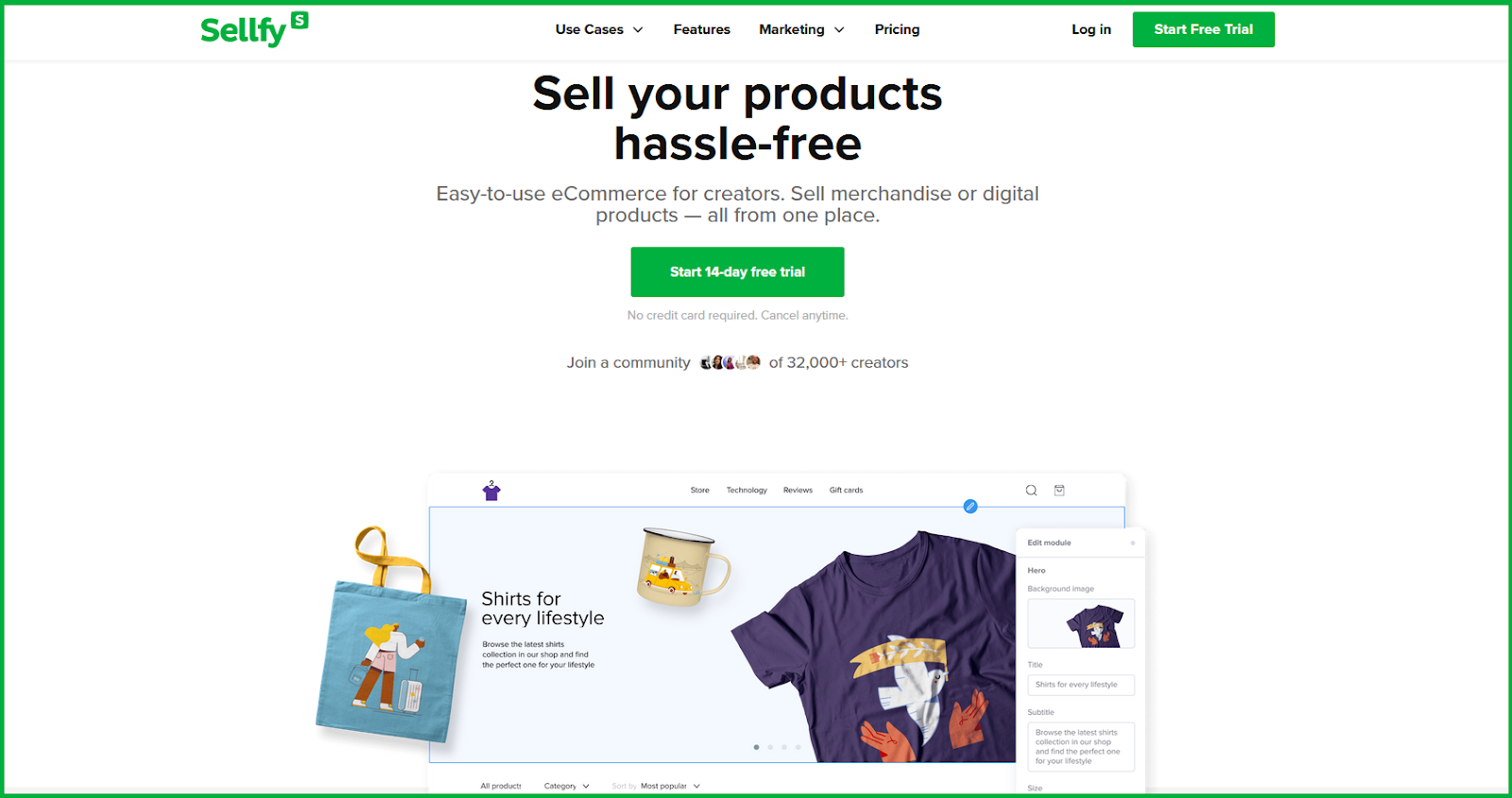
Sellfy is an all in one ecommerce platform that supports both digital and print on demand physical products. With customizable Sellfy storefronts and no limit on the amount of products you can place in your Sellfy store, it's a good choice for creators looking to sell a variety of items, but can be somewhat limited in scalability, although it does offer a built-in Sellfy marketing toolkit to help you promote your products. You can start on Sellfy with a 14-day free trial before committing to one of their plans.
Pros:
- Easy to set up and customize your Sellfy storefront and POD products.
- Offers marketing tools you can use to promote the products in your Sellfy store.
- No individual transaction fees.
Cons:
- Sellfy's monthly subscription plans start at $19 to $29 a month (depending on how many years you're willing to commit to up front.)
- That "easy to set up" pro comes with a con; the Sellfy site is somewhat feature-poor, and there aren't a lot of customization options.
9. Zazzle
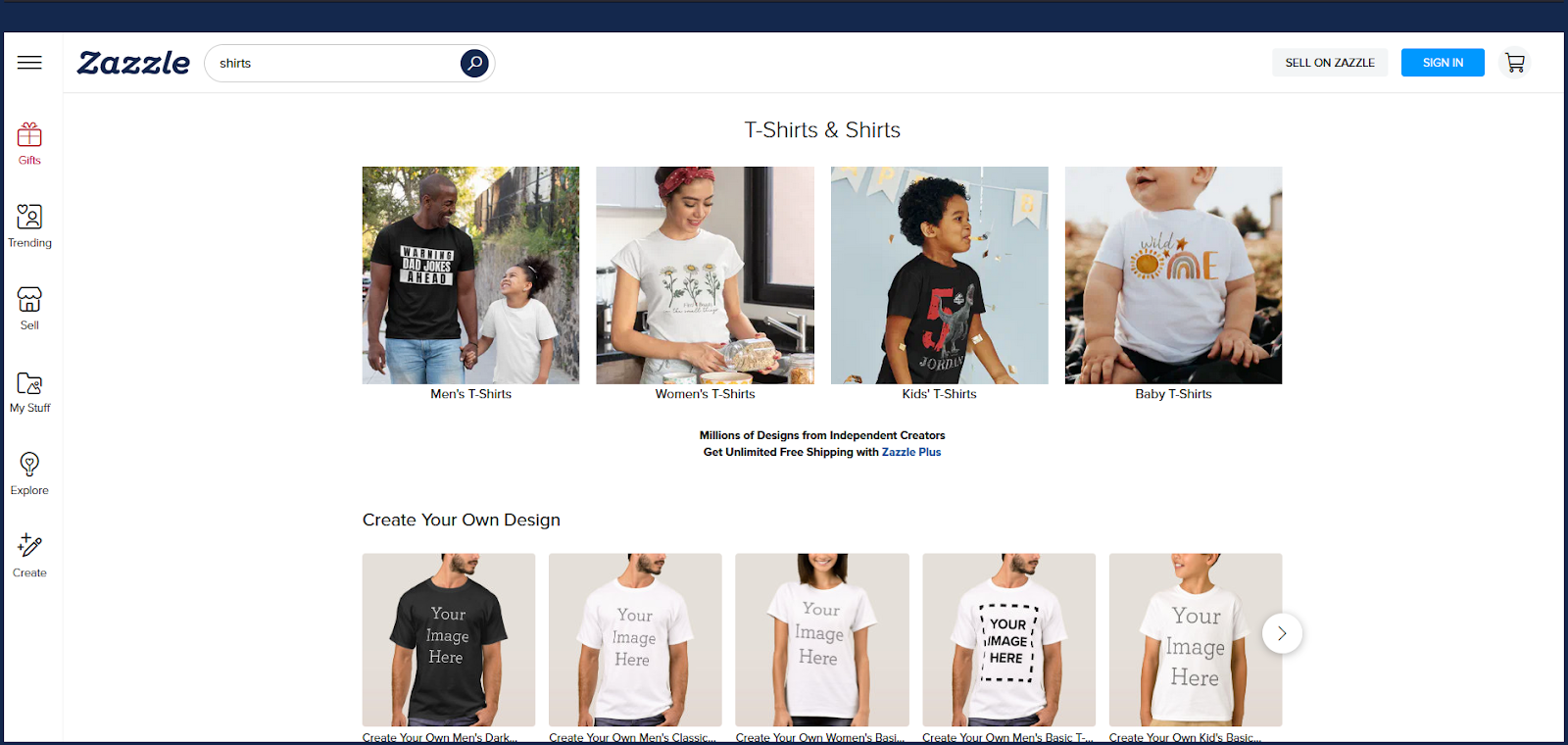
It costs nothing to get started on Zazzle, an online ecommerce marketplace that offers an extensive product catalog of over 1,000 items, and also lets you sell digital downloads in addition to print on demand products. Zazzle sellers are, however, limited to selling on the Zazzle marketplace, where other ecommerce platforms enable you to sell across a number of platforms. You're also not allowed to set your own prices, but if you're okay with setting everything up and leaving it as-is, Zazzle might work just fine for your business needs.
Pros:
- Zazzle has a very large catalog of products available for customization, including lesser-found categories like sports, games, wedding items, and party supplies.
- Allows both digital and physical products in your Zazzle store.
Cons:
- Little control over pricing; Zazzle's standard commission rate is 15%.
- If your store is on Zazzle, that's the only place your Zazzle store can be found.
10. CafePress
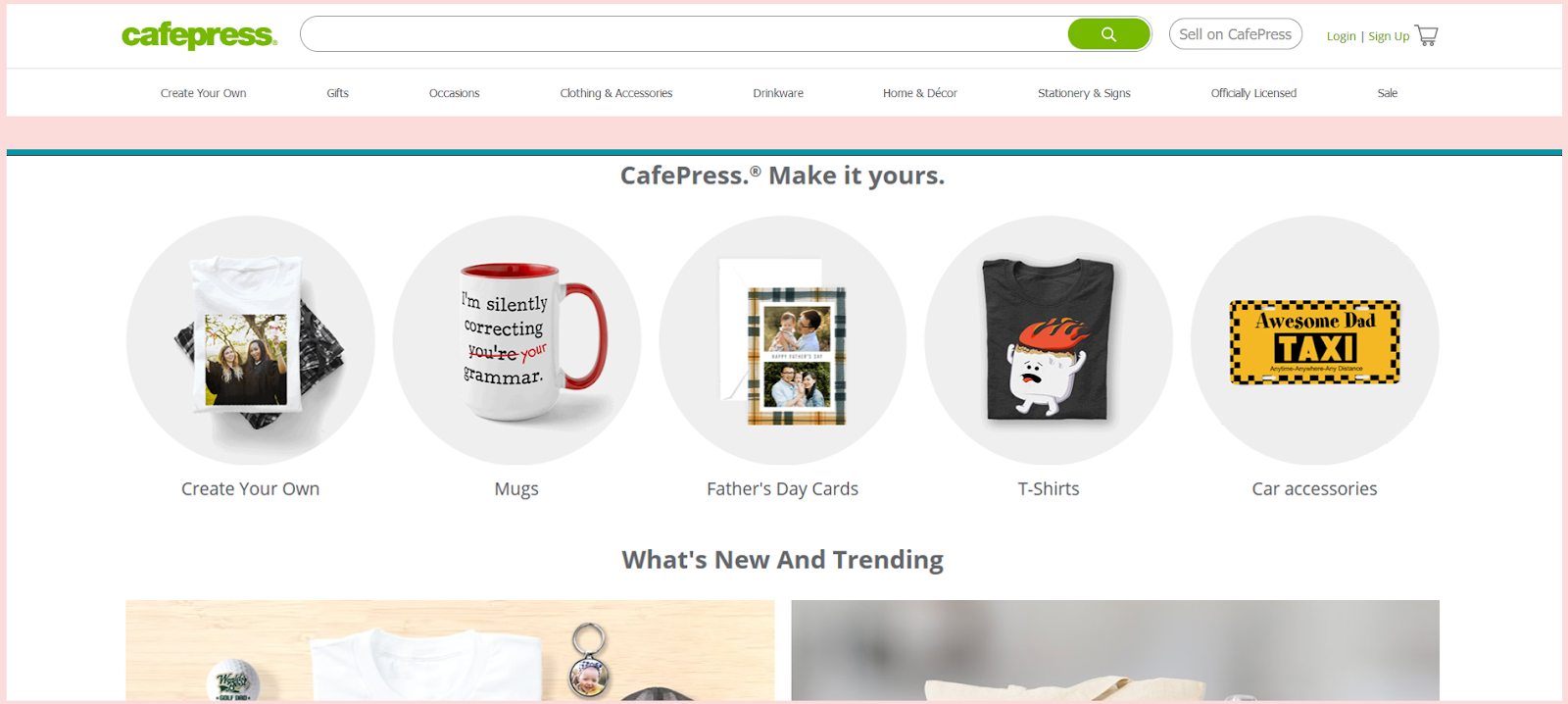
They've been around since 1999, so they're a well known name in the ecommerce world. CafePress offers custom products including apparel, home decor, and accessories, although the quality between different print on demand products can be inconsistent at times. It's easy to build and manage your ecommerce store, and you can choose from a couple of different pricing structures. Their "Design and List" program makes things even simpler (although with less control) - you just upload images, and CafePress automatically selects products that fit your image, and puts them up for print on demand sale.
Pros:
- Wide range of print on demand product categories including apparel, outdoor gear, stationery, and home goods.
- Unique design and pricing structures that let you try different methods of print on demand.
- CafePress also offers strong name recognition, as they've been in the ecommerce business for 25 years.
Cons:
- CafePress reportedly has longer product production times than the average print on demand store.
- Depending on which product you choose, the quality may be inconsistent.
3 Tips For Using Print on Demand Platforms Like Redbubble
Want to maximize your success on your print on demand platform of choice? Try these three top tips!
Fine Tune Your Niche
Whether you decide to stick with Redbubble or venture out into a newer and exciting ecommerce platform like Fourthwall, make sure to identify a specific niche or target audience for your designs to attract more engaged customers. This can be something as simple as focusing on your own brand as a content creator/influencer, or something more artistically targeted, for instance all gaming-themed merch or all vaporwave designs. Narrowing down your store's aesthetic is one great way to build a dedicated, loyal fanbase.
Double Down on Your Designs
Quality designs are key to standing out in a crowded marketplace. Invest time and effort into creating eye-catching artwork; the more unique your designs are, the more you'll be able to offer your fans/customers something they can't purchase anywhere else. And use caution when using AI-generated images to make sure the images aren't full of visual inconsistencies, and also that you have the rights to print and sell them.
Promote, Promote, Promote!
Take advantage of social media, email newsletters, and other marketing channels to promote your store and drive traffic to your products. Put CTAs (calls to action) in your socials posts or videos, and remind your viewers and followers that you have a store available with all kinds of great merch! On some platforms, like Fourthwall, you can also create custom promo codes to pass out, to encourage new visitors to try your shop.
FAQ
What are the drawbacks of using Redbubble?
Some creators find Redbubble's profit margins for selling products to be lower compared to other sites, and there may be limitations on customization options, as Redbubble only allows 30 product uploads a day and has a smaller product catalog than its competitors. Redbubble is also not as well-known as some of the other ecommerce platforms, and seems to be less proactive than some of the newer ones.
Are there better sites than Redbubble?
"Better" is relative. While Redbubble is a popular choice, there are plenty of Redbubble alternatives like Fourthwall that offer unique features and benefits tailored to content creators' needs. Your best bet is to carefully research all of the ecommerce platforms you're considering before committing; it really is an individual decision based on your brand, your goals, and your business and ecommerce needs.
What is the best print on demand platform?
The best print on demand platform depends on your specific needs and preferences. Platforms like Fourthwall, Printful, Teespring, Etsy, and Printify offer a range of features and benefits for creators to explore.
Discover The Best Redbubble Alternative: Fourthwall
Want the ultimate alternative to Redbubble for content creators, influencers, podcasters, and musicians? With Fourthwall, creators can make their digital home on a comprehensive platform that allows them to design, customize, and sell their merchandise - but that's not all.
.webp)
Fourthwall offers a seamless experience, allowing creators to launch their own website and mobile phone app, post premium videos, connect your socials, and much more in addition to setting up their ecommerce store.
Speaking of that Fourthwall store, you can sell both print on demand items and digital items alongside memberships and members-only videos, to build a full, rich customer base and fan community. With Fourthwall, creators have complete control over it all, empowering you to monetize your creativity and really grow your ecommerce presence online. Get started now!

